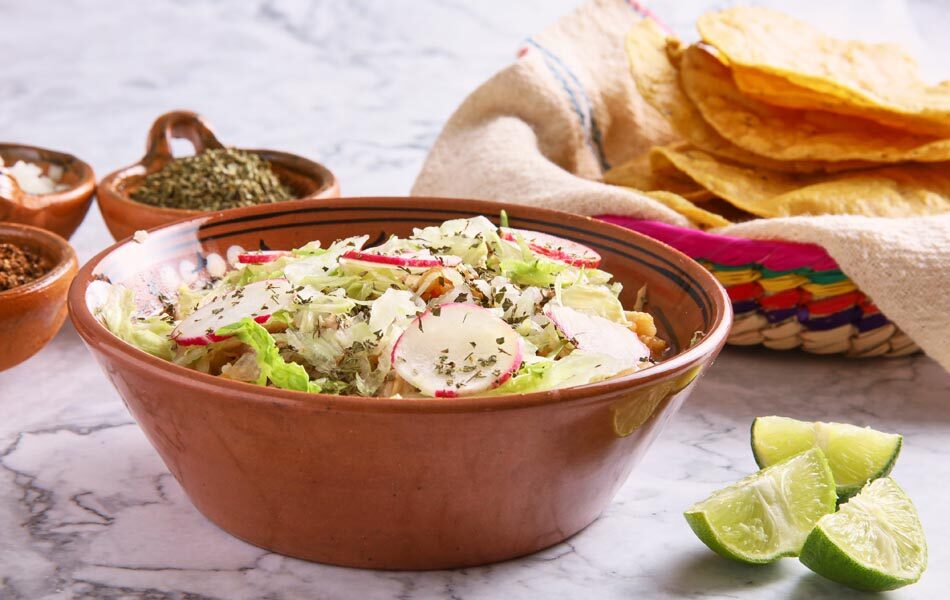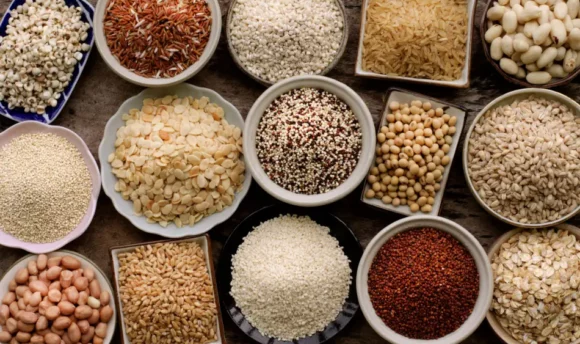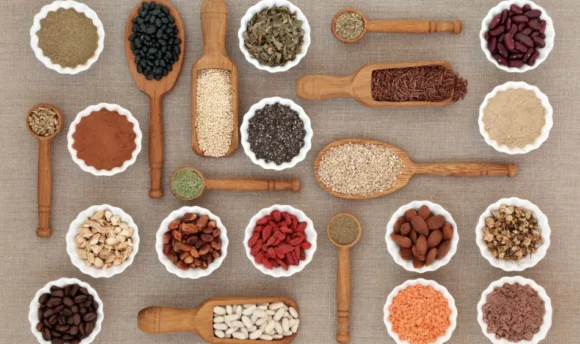Is Pozole Healthy? Nutrition Facts and Benefits
Whether pozole verde or pozole rojo, pozole is a hearty soup or stew popular in Latin American cuisine that many love to enjoy on a cold day. However, many wonder if this traditional Mexican dish is suitable for their health. So let’s talk about it!

While the ingredients can vary slightly, pozole is a flavorful dish enjoyed worldwide. Pozole is often consumed during special occasions, family events, and festivities.
In this article, we will break down the potential health benefits of Mexican pozole, the nutritional information, and the verdict on whether pozole is healthy for you.
Read on to learn more!
What Is Pozole?
Pozole is a soup or stew from Mexican cuisine made with corn or hominy (or both!). It is traditionally consumed during celebrations and festivities with family. However, it can, of course, be eaten year-round.
Pozole originates from Latin American cuisine and can be spicy or plain. Red pozole or pozole rojo as well as green pozole or pozole verde are both spicy, while white pozole is more mild.
Is Pozole Healthy?
Mexican pozole is a healthy dish because it is rich in fruits, vegetables, and lean meat, essential to a well-balanced diet. However, opting for a lower-sodium variety is best for heart health.
3 Benefits of Pozole
Now that we have covered what pozole is, let’s dive into some of the primary health benefits of consuming Mexican pozole. Read on to learn more!
#1 Contains capsaicin
Have you ever wondered what makes spicy foods taste so spicy? The answer is capsaicin.
Capsaicin is a compound found in chili peppers and other spicy ingredients that gives them a hot flavor.
According to the journal Appetite, capsaicin can play a beneficial role as a part of a weight management program and may help you lose weight. Capsaicin was found to increase the number of calories that are burned by approximately fifty calories each day.
Capsaicin also demonstrated the ability to increase fat breakdown and decrease overall appetite, which can help you lose weight as well.
Therefore, if you like spicy, opt for a spicy pozole to reap the benefits of capsaicin on your health.
#2 Supports energy metabolism
According to the United States Department of Agriculture (USDA) database, a 100g serving of pozole is an excellent source of niacin, an essential B vitamin.
According to the Mayo Clinic, niacin, or vitamin B3, plays a role in metabolism and breaking down the food we eat and turning it into energy the body can use. In addition, it supports a healthy digestive system, nervous system, and skin.
#3 Easy to customize
A major benefit of pozole is how versatile and customizable it can be. Whether you prefer chicken broth, pork broth, or even vegetable broth, you can add your favorite ingredients to your Mexican pozole, such as fruits and vegetables, herbs and spices, and more!
You can also adjust the spice level (from pozole rojo and pozole verde to pozole blanco) and the flavor profile to your liking, making pozole an excellent option for the whole family to enjoy.
You can go with the traditional recipes for Mexican pozole or can make it simpler with canned vegetables as well. Many even choose to cook their pozole in a slow cooker.
What Ingredients Does Pozole Contain?
Mexican pozole can have many different variations in the recipe. However, most pozole is made with corn or hominy that is cooked in chicken or pork soup broth. For the protein source, pork is typically used, but chicken or seafood is also an option. If you are using hominy, remember that it’s not keto-friendly.
The soup is spiced with chilis; however, it can be made milder in spiciness as well.
Usually, the soup is topped with avocado, radishes, cilantro, cabbage, tomato, and lime. However, it can often include beans, onions, and much more.
Pozole Nutrition Facts
We have established that Mexican pozole has some health benefits. But does it have downsides as well?
Let’s dive into the nutrition information for a serving of pozole and how it can impact your health.
Nutritional value (per 100g)
| Calories/Nutrient (per 100g) | Amount |
| Calories (kcal) | 90 |
| Sodium (mg) | 241 |
| Net Carbs (g) | 5.11 |
| Fiber (g) | 0.4 |
| Sugar (g) | 1.52 |
| Fats (Total) | 4.12 |
| Protein (g) | 7.49 |
| Cholesterol (mg) | 20 |
Source: https://fdc.nal.usda.gov/fdc-app.html#/food-details/1100106/nutrients
Low in carbohydrates
A 100g serving of Mexican pozole contains only 5g of total carbohydrates. For reference, a 100g serving is a little over one-third of a cup of pozole soup.
However, this amount of pozole has less than half a gram of dietary fiber. According to the Mayo Clinic, fiber is essential in a healthy diet because it not only normalizes bowel movements and supports digestive health but it can also help regulate blood sugars and even lower cholesterol.
Additionally, a meal high in fiber increases satiety and helps you feel full for longer during the day.
Men and women aged 50 or younger should consume 38 grams and 25 grams of dietary fiber each day, respectively. Additionally, men and women aged 51 and older should consume 30 grams and 21 grams, respectively.
To add more fiber to your pozole, pair it with some whole-grain bread or crackers, a piece of fruit, or a side salad.
High in vitamins and minerals
Pozole is full of fruits and vegetables, such as avocados, onions, tomatoes, radishes, cabbage, lime, and more!
As mentioned above, pozole is rich in niacin, but it is also a good source of potassium. Potassium is an essential mineral that functions as an electrolyte in the body. Especially during times of dehydration, potassium plays a role in maintaining fluid balance.
Low in cholesterol
A 100g serving of pozole contains only a mere 20mg of dietary cholesterol. Cholesterol is a type of fat that can contribute to an increased risk of heart disease, including heart attack and stroke.
The 2020–2025 Dietary Guidelines for Americans recommend consuming as little dietary cholesterol as possible to reduce the risk of heart disease.
20mg of cholesterol is very low. However, 20mg can add up quickly if you are consuming large quantities of pozole, especially with pork.
Relatively high in protein
Pozole is a dish high in protein because of the pork, chicken, or seafood it contains. Avocados also contain small amounts of protein.
Protein is essential because it helps build and repair strong muscles in the body.
A 100g serving of pozole contains a whopping 7.5g of protein. Keep in mind that this amount is just over one-third cup, which is likely smaller than the average portion size that many would have.
Some pozole recipes also call for beans, which increase the protein content even more.
Moderate in fat
A 100g serving of pozole contains about 4g of total fat and 1.3g of saturated fat. Therefore, a one-cup serving (238g) contains 10g of total fat and 3g of saturated fat.
The American Heart Association recommends consuming no more than 5–6% of your daily calories as saturated fat. Therefore, if you need 2,000 calories per day, no more than 120 of those calories should come from saturated fat.
For reference, 120 calories are approximately 13g of saturated fat. Therefore, the 3g of saturated fat in a one-cup serving of pozole is moderate.
However, it is easy to consume more than just one cup of pozole; therefore, the fat can add up quickly, contributing to potential weight gain and increased risk of heart disease.
Since red meats, such as pork, are high in cholesterol and saturated fat, swapping out pork for chicken can help reduce total fat content.
Homemade Pozole Recipe
Now that we have discussed all of the nutritional information for pozole, let’s go through a delicious and easy recipe for making a healthy pozole at home! Remember, making pozole (or any meal) at home allows you to control exactly how much sodium it contains.
Ingredients:
- 3 diced chicken breasts
- 1 tbsp of extra virgin olive oil
- 1 avocado, diced
- ½ onion, diced
- 1 can of hominy, drained and rinsed
- ⅓ cup of diced green chilis (optional)
- 1 tsp of chili powder
- 1 chopped clove of garlic
- 1 tsp of cumin
- Dash of black pepper
- Dash of cayenne pepper
- 3 cups of low-sodium chicken broth
- 1 can of stewed tomatoes
- Shredded cabbage, lime wedges, sour cream, and sliced radish for a garnish
Preparation:
- Heat the olive oil and sauté the chicken breast in a large pan until fully cooked.
- Add the diced onion, garlic, green chilies, chili powder, cumin, black pepper, and cayenne pepper to the chicken. Pour in the low-sodium chicken broth.
- Add the stewed tomatoes and cook for about 20 minutes, stirring occasionally.
- Add in the can of hominy and cook for another 15 minutes, stirring occasionally.
- Top with diced avocado, shredded cabbage, lime wedges, sour cream, and sliced radishes. Enjoy!
For more healthy recipes that are quick and easy to make at home, check out the DoFasting nutrition app. Their recipes are hand-picked by nutrition professionals and taste amazing!

- Useful progress tracker and calendar
- Calorie tracker to track daily caloric intake
- Over 5,000 nutritious recipes
FAQs
Pozole is good for you because it is rich in fruits, vegetables, protein, and starch. However, it is high in sodium, so opt for a lower sodium variety or make it from scratch at home.
In a one-cup serving of pozole, equivalent to 8fl oz or 238g, there are 214 calories.
A one-cup serving of pozole contains about 10g of total fat and 3g of saturated fat. Therefore, pozole has a moderate amount of fat and can cause weight gain if you consume excessive amounts, such as a few cups or more.
Yes, homemade pozole can be a good addition to your diet as it’s low in carbs and relatively high in protein. However, you should be mindful of the portion size. Another Mexican dish you may consider for weight loss is Caldo de Res.
A Word From a Nutritionist
Overall, pozole is a great soup that contains many essential food groups, from fruits and vegetables to protein and healthy fat.
In addition, pozole can be customized to your taste preferences, whether you enjoy hot and spicy foods or like milder flavors.
Regardless, pozole has protein from the meat and beans and healthy fats from the avocado. Therefore, it is sure to keep you feeling full and satisfied throughout the day. Not to mention that it tastes delicious!
For even more nutritional benefits, stick with chicken as your meat instead of pork, and add as many fruits and vegetables as you can. Pair with a side of whole-wheat bread, a small piece of whole fruit, a side salad, or cooked veggies to add beneficial dietary fiber.
Conclusion
In conclusion, pozole is a healthy soup that contains many essential vitamins and minerals. Whether it is pozole rojo or pozole verde, it is low in carbohydrates and cholesterol yet high in protein.
Pozole has many possible health benefits, including weight loss, lower cholesterol levels, and more. In addition, the chili peppers in pozole contain capsaicin, which has been shown to support weight loss.
Making your own pozole at home can help to control exactly how much sodium is added. Additionally, when you make pozole at home, you can add even more delicious fruits and vegetable ingredients to your soup!

















































 Select your language:
Select your language: 








